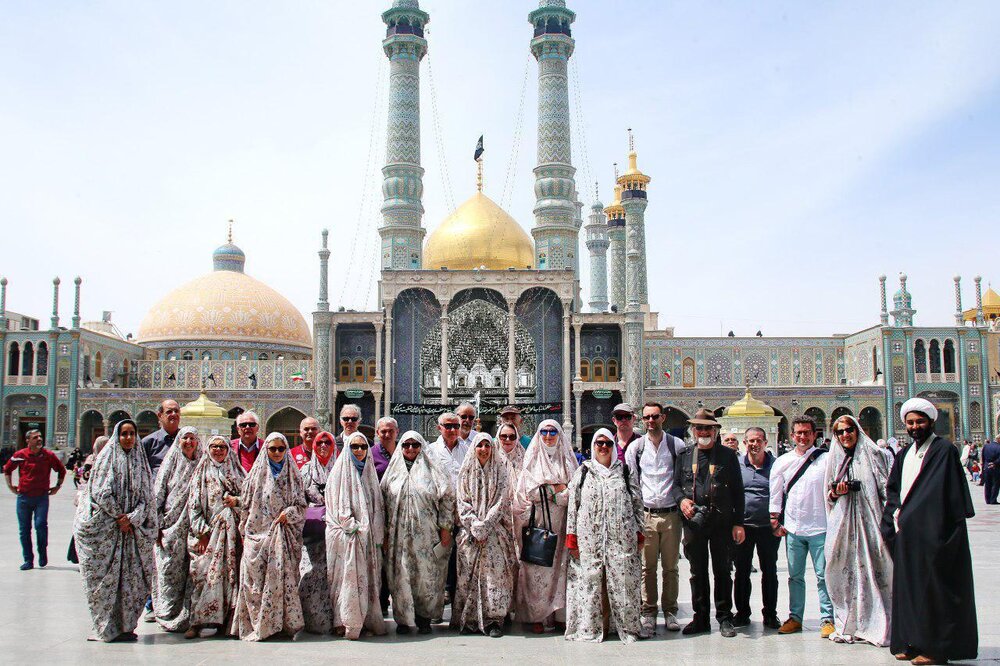Iran and its enormous potential for religious tourism

TEHRAN – Iran is growing into a major destination for religious tourism despite U.S. sanctions on its economy, some experts say.
“We have achieved a considerable growth of tourism in Iran,” said the former CEO of Iran’s Tourism Development Corporation Gholamhossein Hosseini in an interview with Press TV.
“World’s average growth in tourism stands at around three to four percent. This is while we have experienced about 10 percent growth in 2015 which I believe is a remarkable success.”
“When it comes to religious tourism, Iran is among the top five countries in the world,” he added, noting that the Islamic Republic is well on its way to achieve its 20-year vision plan for tourism industry, which is to attract more than 20 million tourists.
Among the top destinations for international tourists to Iran are religious cities of Mashhad, Qom, Shiraz and capital Tehran. These cities are respectively home to the holy shrines of Imam Reza, the eighth Imam of Shia Muslims; his sister Hazrat Masumeh (SA); his brothers Ahmad and Mohammad; as well as the late founder of the Islamic Revolution Imam Rouhollah Khomeini, Press TV reported.
In terms of religious tourism, Hosseini further emphasized, “Iran enjoys an enormous potential. It has 8,000 sacred sites and pilgrimage places, around 4,400 of them have been registered.”
“People from different religious backgrounds have a reason to visit Iran. Different religions in Iran have their own religious ceremonies and all that can attract tourists,” he said.
Mashhad and Qom, however, “have always been the top five destinations for religious tourists,” he noted.
Today 1.8 million tourists just from Iraq visit Iran annually, said the head of Iran’s tour operators associations, Ebrahim Pourfaraj. “We’ve had a rising tourism in Iran from countries like Oman, Kuwait, Pakistan and Afghanistan.”
“Many religious tourists from across the world have seized the opportunity of depreciation of the value of the Iranian rial [due to U.S. sanctions] to visit Iran for longer time periods,” he added.
Moreover, the deputy tourism minister Vali Teimouri points out that according to the 2018 report released by the world tourism organization for our region, “each tourist brings [on average] $1,490 to the country, and if you multiply that by the nearly 8 million international tourists that visit Iran annually, you’d be amazed by the foreign currency injected to the country’s economy through the tourism industry.”
He further underlined that tourism also contributes greatly to employment across the country, noting that tourism creates jobs more than any other industry and that tourists tend to spend money on tour guides, restaurants, various Iranian market places to purchase handicrafts and other goods.
A unique time for visiting Iran is during the first ten days of the lunar month of Muharram, which fell from Sept. 1 to 10 this year. That’s because Iranians, who are mostly Shia Muslims, hold special ceremonies during this time. For Shia Muslims, Muharram is a turning point in the history of Islam.
Over the past couple of years, Yazd, Meybod, Isfahan and Kashan were among the cities which hosted the highest numbers of foreign tourists on the ninth and the tenth days of Muharram (Tasua and Ashura) when the mourning ceremonies reach its climax.
Last November, the U.S. reinstated sanctions on Iran, mainly the ones that had been lifted under the landmark 2015 nuclear deal, in order to batter Iran’s economy, however, according to official data, they have so far failed to lessen foreign arrivals to the Islamic Republic.
AFM/MG
